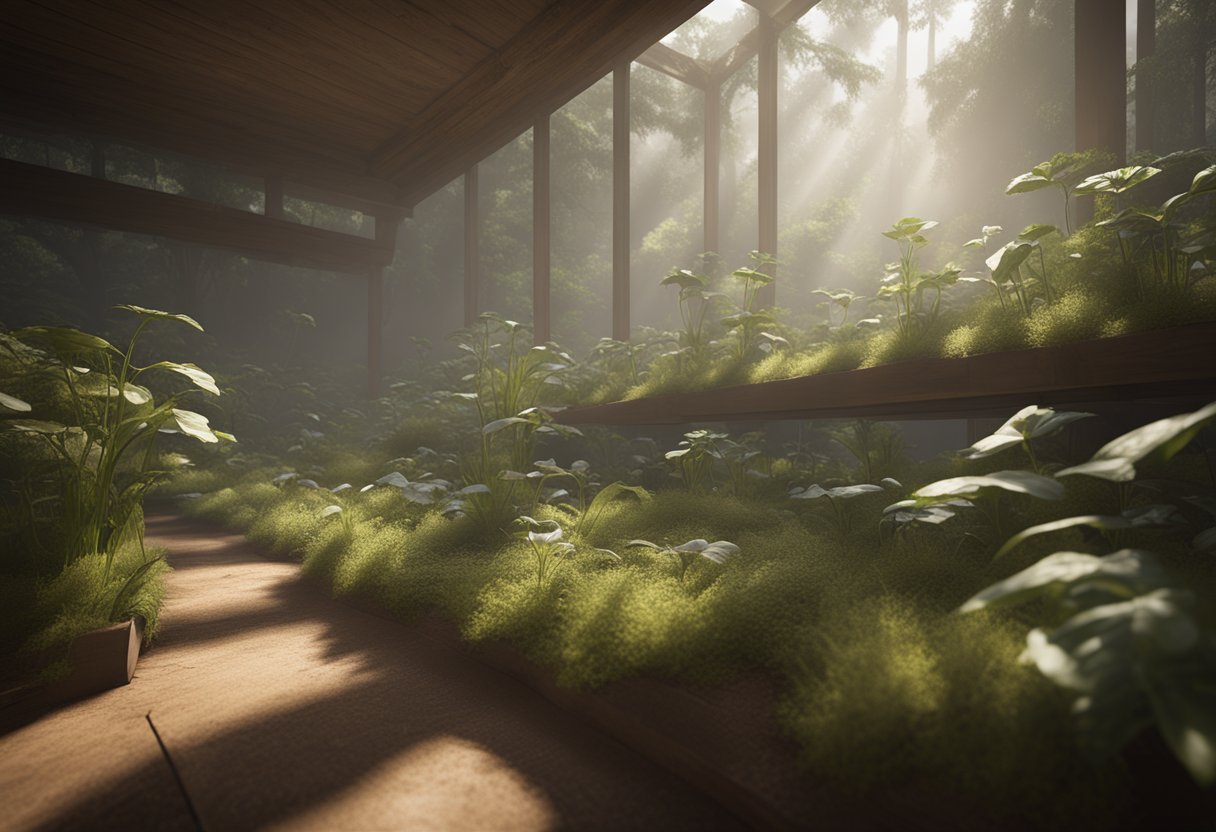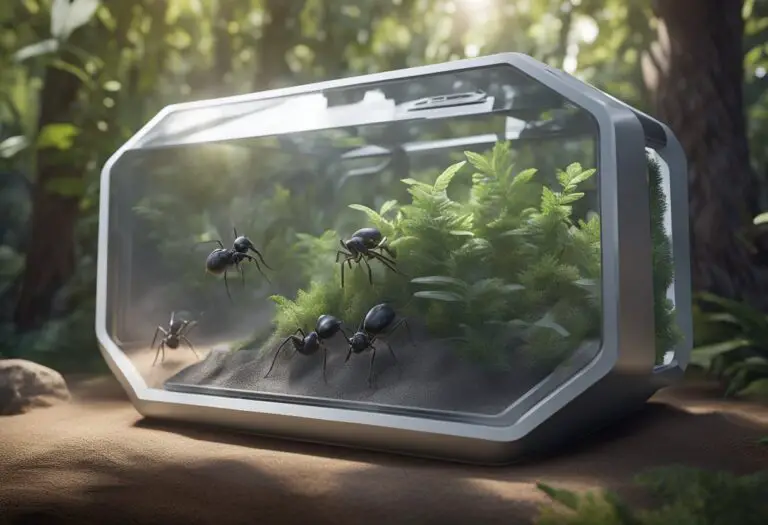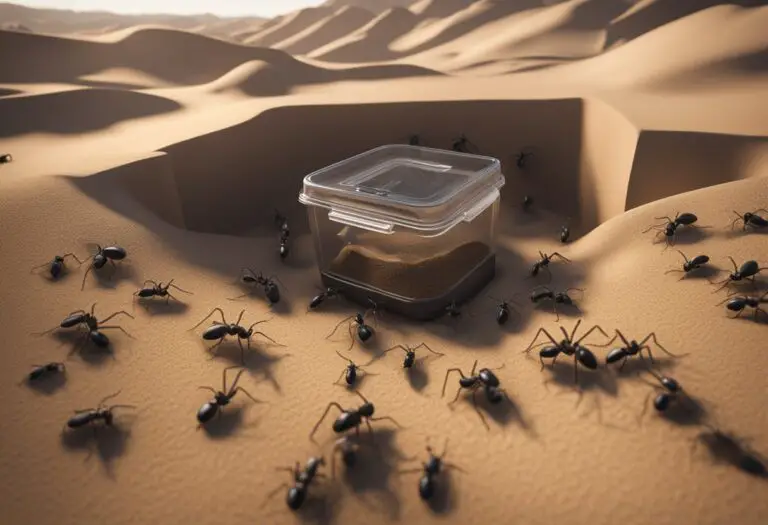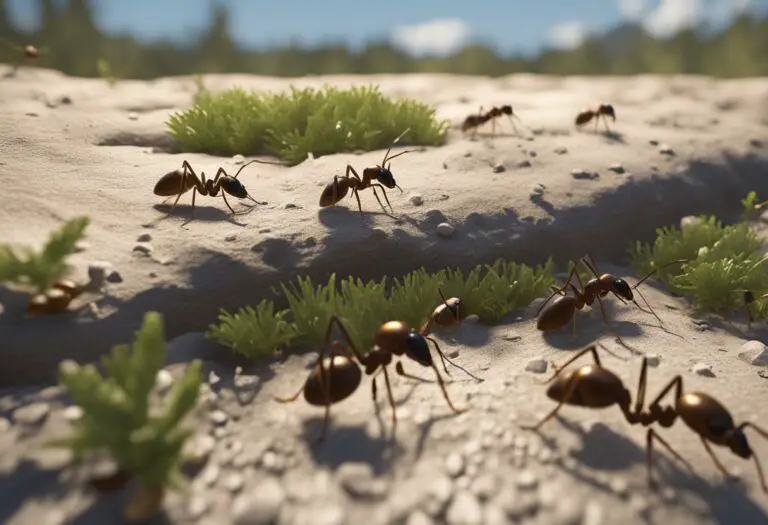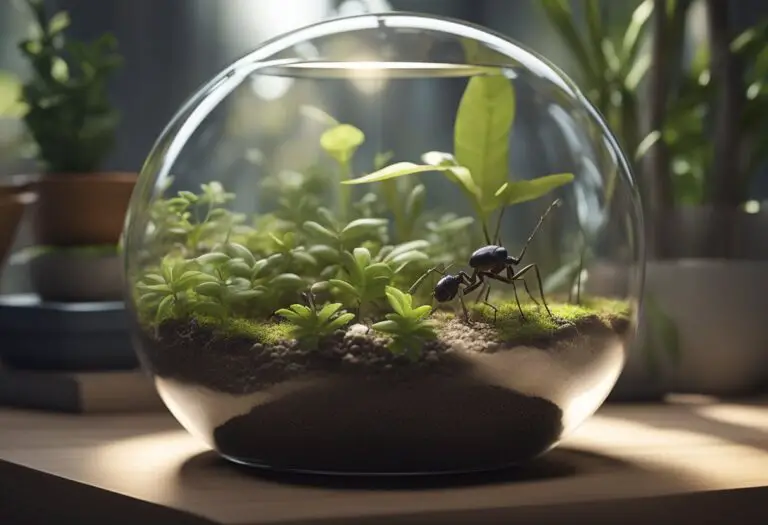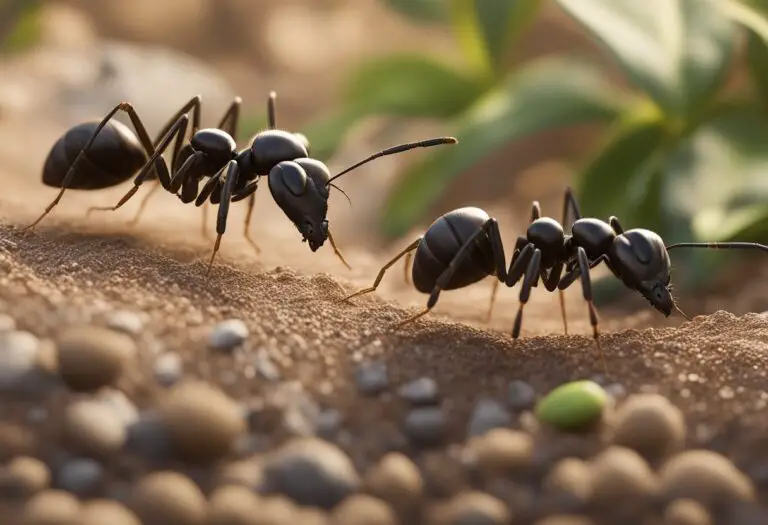What are the Ideal Humidity Levels for Ant Habitats?
Ants are fascinating creatures that live in colonies and work together to build intricate nests. However, to ensure the health and survival of these tiny insects, it is important to maintain suitable humidity levels in their habitats. Humidity levels that are too high or too low can have detrimental effects on the ants, leading to a range of health problems and even death.
The ideal humidity levels for ant habitats vary depending on the species of ant and the type of habitat they live in. Some ants prefer a drier environment, while others thrive in more humid conditions. It is important to understand the specific needs of the ant species being kept in order to provide them with the best living conditions possible. In this article, we will explore the ideal humidity levels for various ant species and provide tips on how to maintain appropriate levels in their habitats.
Understanding Humidity in Ant Habitats

Maintaining the ideal humidity level in an ant habitat is crucial for the health and well-being of the colony. Humidity refers to the amount of moisture or water vapor present in the air. Ants require a specific range of humidity levels to thrive, and any deviation from this range can lead to various health problems.
The ideal humidity range for most ant species is between 50% to 70%. This range provides the necessary moisture for the ants to carry out their daily activities, such as brood care and foraging. If the humidity is too low, the ants may become dehydrated, and their eggs and larvae may not develop properly. On the other hand, if the humidity is too high, it can lead to mold growth and respiratory problems for the ants.
To maintain the ideal humidity level in an ant habitat, it is essential to monitor the humidity levels regularly. This can be done using a hygrometer, which is a device that measures the humidity in the air. If the humidity levels are too low, adding a source of moisture such as a water dish or misting the enclosure can help increase the humidity. If the humidity levels are too high, reducing the amount of moisture in the enclosure by increasing ventilation or removing any wet materials can help bring the levels back to the ideal range.
In conclusion, understanding humidity in ant habitats is crucial for the health and well-being of the colony. Maintaining the ideal humidity range of 50% to 70% can help ensure that the ants thrive and remain healthy. Regular monitoring of the humidity levels and taking appropriate actions to maintain the ideal range can go a long way in ensuring the success of an ant colony.
Ideal Humidity Levels for Different Ant Species

Ants are fascinating creatures that come in a variety of species. Each species has its own unique characteristics and requirements for survival. One of the essential factors that affect the health and well-being of ants is humidity.
Tropical Ant Species
Tropical ant species come from regions with high humidity levels. These ants require a humid environment to thrive. The ideal humidity level for tropical ant species is between 70% to 80%. If the humidity level drops below 60%, it can cause dehydration and lead to the death of the ants.
Temperate Ant Species
Temperate ant species come from regions with moderate humidity levels. These ants require a slightly lower humidity level than tropical ants. The ideal humidity level for temperate ant species is between 50% to 60%. If the humidity level goes above 70%, it can lead to mold growth and other health issues for the ants.
Desert Ant Species
Desert ant species come from regions with low humidity levels. These ants require a dry environment to survive. The ideal humidity level for desert ant species is between 20% to 30%. If the humidity level goes above 40%, it can lead to mold growth and other health issues for the ants.
In conclusion, understanding the ideal humidity levels for different ant species is crucial for their survival and well-being. By providing the appropriate humidity levels, ant keepers can ensure the health and longevity of their ant colonies.
Factors Influencing Habitat Humidity

Enclosure Material
The type of material used to construct the ant habitat enclosure can significantly impact the humidity levels inside. Materials that are porous, such as wood or unglazed ceramic, can absorb moisture and help maintain a higher humidity level. In contrast, plastic or glass enclosures are non-porous and may require additional moisture sources to maintain ideal humidity levels.
Ventilation
Proper ventilation is crucial in maintaining optimal humidity levels for ant habitats. Without adequate ventilation, humidity levels can become too high, leading to mold growth and other issues. On the other hand, too much ventilation can cause humidity levels to drop too low, which can be detrimental to the ants’ health.
Substrate Type
The type of substrate used in the ant habitat can also influence humidity levels. Substrates that retain moisture, such as coconut fiber or sphagnum moss, can help maintain ideal humidity levels. In contrast, substrates that do not retain moisture, such as sand or gravel, may require more frequent misting or watering to maintain proper humidity levels.
External Environment
The external environment can also impact the humidity levels inside the ant habitat. If the ambient humidity levels in the room are low, it may be necessary to provide additional moisture sources, such as a humidifier or misting system. Additionally, factors such as temperature and airflow can also affect humidity levels, so it is important to monitor these factors and make adjustments as necessary.
Measuring and Controlling Humidity

Hygrometers and Their Use
To measure the humidity levels in an ant habitat, a hygrometer is an essential tool. Hygrometers can be either analog or digital and are readily available in pet stores or online. Analog hygrometers use a dial or needle to indicate the humidity level, while digital hygrometers display the humidity level on a screen. It is recommended to use a digital hygrometer for more accurate readings.
When using a hygrometer, it is important to place it in an area of the ant habitat where the humidity level needs to be measured. This could be near the water source or in an area where the ants spend most of their time. It is also important to calibrate the hygrometer regularly to ensure accurate readings.
Humidifiers and Dehumidifiers
In some cases, it may be necessary to use a humidifier or dehumidifier to control the humidity levels in an ant habitat. A humidifier can be used to increase the humidity levels in the habitat, while a dehumidifier can be used to decrease the humidity levels.
When using a humidifier or dehumidifier, it is important to monitor the humidity levels using a hygrometer and adjust the device as needed. It is also important to choose a device that is appropriate for the size of the ant habitat and to follow the manufacturer’s instructions for use.
Natural Humidity Regulation Methods
There are also natural methods for regulating humidity levels in an ant habitat. One such method is to provide a water source such as a test tube or water dispenser. This allows the ants to regulate the humidity levels themselves by moving closer or farther away from the water source.
Another natural method is to provide ventilation in the ant habitat. This allows for air circulation and can help regulate humidity levels. However, it is important to ensure that the ventilation does not cause the habitat to become too dry or too humid.
Overall, measuring and controlling humidity levels in an ant habitat is essential for the health and well-being of the ants. By using a hygrometer and appropriate methods for regulating humidity levels, ant keepers can create a comfortable and healthy environment for their ants.
Impact of Incorrect Humidity Levels

Effects on Ant Health
Maintaining proper humidity levels in ant habitats is crucial for the health of the ants. When humidity levels are too high, it can lead to fungal growth, bacterial infections, and respiratory problems in ants. On the other hand, low humidity levels can cause dehydration and stress in ants, which can lead to weakened immune systems and increased susceptibility to diseases.
A study conducted by the University of Georgia found that ants exposed to high humidity levels were more likely to develop respiratory problems, leading to decreased longevity and reduced reproductive success. Therefore, it is essential to maintain optimal humidity levels to ensure the overall health and well-being of the ant colony.
Effects on Colony Growth
Humidity levels also play a significant role in the growth and development of ant colonies. Too much or too little humidity can hinder the growth of the colony, affecting the queen’s ability to lay eggs and the larvae’s ability to develop properly.
In a study conducted by the University of California, Berkeley, researchers found that ants exposed to low humidity levels had a slower rate of larval development, leading to smaller worker ants and decreased colony size. Similarly, ants exposed to high humidity levels had a reduced rate of egg-laying, leading to slower colony growth.
Therefore, maintaining optimal humidity levels is crucial for the overall health and growth of the ant colony. By providing the right humidity levels, ant keepers can ensure the long-term success of their ant colonies.
Troubleshooting Common Humidity Issues

Maintaining the ideal humidity levels in ant habitats can be a challenging task, and sometimes, even with the best efforts, things can go wrong. Here are some common humidity issues that ant keepers face and how to troubleshoot them.
Low Humidity
If the humidity in the ant habitat is too low, it can lead to dehydration and stress in ants. In such cases, it is essential to increase the humidity levels. Here are some ways to do it:
- Misting: Misting the ant habitat regularly with water can help increase the humidity levels. Use a fine mist sprayer to avoid flooding the habitat.
- Adding a water source: Placing a water source such as a test tube or a water gel near the ants’ nest can help increase the humidity levels.
- Covering the nest: Covering the nest with a damp cloth or paper towel can also help increase the humidity levels.
High Humidity
High humidity levels can lead to mold, mildew, and bacterial growth in the ant habitat, which can be harmful to the ants. Here are some ways to lower the humidity levels:
- Ventilation: Increase the ventilation in the ant habitat by opening the lid or adding more air holes to allow for better airflow.
- Removing water sources: If there are too many water sources in the ant habitat, remove some of them to reduce the humidity levels.
- Using a dehumidifier: If the humidity levels are too high, using a dehumidifier can help lower them.
Uneven Humidity
Uneven humidity levels can lead to stress and health problems in ants. Here are some ways to ensure even humidity levels in the ant habitat:
- Using a hygrometer: Use a hygrometer to monitor the humidity levels in the ant habitat regularly. This can help you identify any unevenness in the humidity levels and take corrective measures.
- Using a substrate: Using a substrate such as vermiculite or coconut fiber can help regulate the humidity levels in the ant habitat and ensure even distribution.
By troubleshooting common humidity issues, ant keepers can ensure that their ants are healthy and thriving in their habitat.

